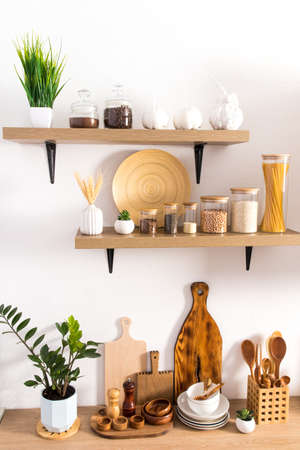Creating a Welcoming Cottage Ambience
Transforming your dining area into a cosy country cottage sanctuary starts with embracing the serene charm of rural Britain. Begin by selecting a calming palette inspired by the countryside: think muted sage greens, soft creams, and gentle sky blues. These colours create an inviting backdrop that soothes the senses and sets a relaxed tone for gatherings. Maximise natural light by keeping windows clear or using lightweight linen curtains, allowing sunlight to gently filter in and illuminate rustic textures. Layering different lighting sources, such as warm pendant lamps or candle sconces, further enhances the snug atmosphere as evening falls. Emphasise comfort with cushioned chairs, plush throws, and tactile table linens that evoke the feeling of a welcoming retreat after a walk in the fields. By weaving together these elements, you’ll craft a dining space that exudes warmth and hospitality—the very essence of British cottage living.
Essential Elements of Rural Dining Decor
Transforming your dining space into a cosy country cottage retreat starts with choosing the right elements that reflect the timeless appeal of rural England. From traditional materials to classic furniture styles and charming tableware, every detail counts in creating that quintessentially English atmosphere.
Traditional Materials: The Foundation of Country Style
The use of natural, durable materials is at the heart of rural dining decor. Think exposed wooden beams, solid oak tables, and rustic stone or slate flooring. These materials not only provide a sense of warmth and authenticity but also ensure longevity—an essential consideration for any home in the British countryside.
| Material | Description | Typical Use |
|---|---|---|
| Oak | Strong and enduring with beautiful grain patterns | Dining tables, chairs, cabinets |
| Pine | Lighter wood with a softer feel, often painted or distressed | Sideboards, shelving, wall panelling |
| Stone/Slate | Natural texture, cool underfoot, highly robust | Flooring, feature walls, hearths |
| Ceramics | Hand-glazed for unique finishes and heritage charm | Dinnerware, decorative jugs, serving platters |
Furniture Styles: Blending Comfort and Character
Country cottage dining rooms are defined by furniture that balances comfort with character. Look for pieces with soft curves and a well-loved patina. Ladder-back chairs, farmhouse tables with chunky legs, and vintage sideboards are all iconic choices. Painted finishes in muted greens, creams or blues add to the relaxed vibe while making maintenance easy—a practical nod to British sensibility.
Popular Country Cottage Furniture Pieces:
- Ladder-back Chairs: Traditional design offering both support and rustic aesthetics.
- Farmhouse Table: Sturdy with room for gatherings; often crafted from reclaimed wood.
- Dresser or Welsh Dresser: Showcases treasured crockery and provides handy storage.
- Bentwood Chairs: Lightweight yet elegant—ideal for adding a touch of vintage flair.
Tableware Choices: Setting the Scene for Every Meal
No English country cottage dining experience is complete without thoughtfully chosen tableware. Hand-painted ceramics, mismatched vintage plates, and classic enamelware all evoke a sense of homely tradition. Incorporate linen napkins and floral-patterned tablecloths for added warmth. The key is to combine practicality with charm—after all, these items should stand up to daily use while still looking inviting for guests.
A Guide to Classic Cottage Tableware:
| Item Type | Description & Style Tips |
|---|---|
| Ceramic Plates & Bowls | Select hand-thrown or painted pieces for unique character; blue-and-white motifs are especially traditional. |
| Mismatched Cutlery | Add personality by mixing antique silver pieces with everyday stainless steel. |
| Linen Napkins & Runners | Choose soft hues or gentle floral prints to enhance the cottage look. |
| Enamelware Jugs & Mugs | Tough and practical, perfect for serving tea or displaying fresh wildflowers. |
By carefully selecting each material and accessory with an eye towards tradition and comfort, you can infuse your dining area with the enduring appeal of an English country cottage—making every meal feel like a special occasion in the heart of your home.

3. Incorporating Vintage Finds and Heirlooms
Creating an inviting country cottage dining space is all about weaving together stories from the past with present-day comfort. One of the most effective ways to achieve this is by carefully sourcing and integrating vintage finds, reclaimed furnishings, and cherished family heirlooms. Begin your search at local antique fairs, car boot sales, or even charity shops; these are treasure troves for unique items that carry a sense of history and nostalgia.
Sourcing Authentic Pieces
When selecting vintage furniture or décor, opt for pieces that show their age gracefully—think solid oak tables with worn edges, spindle-back chairs with time-worn patina, or sideboards featuring hand-carved details. Not only do these add character, but they also echo the rural British tradition of passing down well-made items through generations.
Blending Old and New
The secret to a cohesive look is in the blend. Mix your vintage discoveries with modern comforts: perhaps pair a reclaimed pine table with contemporary linen upholstery or dress an inherited china cabinet with new ceramics in soft pastel hues. This fusion prevents the space from feeling like a museum and instead keeps it warm and lived-in—a true hallmark of British cottage style.
Celebrating Family History
Don’t shy away from displaying family treasures: a mismatched collection of grandma’s teacups, a set of silver cutlery handed down through the years, or even old photographs in weathered frames. These personal touches root your dining area firmly in your own story while honouring the timeless appeal of rural homes across the UK.
4. Celebrating Seasonal Touches
Embracing the ever-changing British seasons is a hallmark of authentic country cottage dining. By thoughtfully updating your dining space with the rhythm of rural life, you can create a welcoming atmosphere that feels both fresh and timeless. Let’s explore how to incorporate seasonal touches through floral arrangements, textiles, and table settings.
Floral Arrangements: Nature’s Centrepiece
Nothing evokes the English countryside quite like a vase brimming with freshly picked blooms. Each season brings its own palette—think daffodils and tulips in spring, wild roses and foxgloves in summer, dahlias and hydrangeas for autumn, and sprigs of holly or eucalyptus in winter. Local florists and even your own garden are perfect sources for these natural decorations.
| Season | Floral Highlights |
|---|---|
| Spring | Daffodils, Tulips, Bluebells |
| Summer | Foxgloves, Wild Roses, Lavender |
| Autumn | Dahlias, Hydrangeas, Sunflowers |
| Winter | Holly, Eucalyptus, Pine Cones |
Textiles: Layering Comfort and Character
Cottage style thrives on tactile warmth and visual interest. Rotate tablecloths, napkins, and seat cushions to reflect the time of year. Opt for gingham or pastel linens in spring; floral or botanical prints for summer; earthy tones and woollen textures as autumn arrives; then plush throws and tartan patterns for winter gatherings. Mixing vintage finds with new pieces adds an extra layer of rustic charm.
Table Settings: Thoughtful Details for Every Season
Your tableware can echo the beauty outside your window. Use hand-thrown pottery in natural glazes for a year-round rustic look, but change up placemats, candleholders, and centrepieces as the months pass. For instance:
| Seasonal Accent Ideas | Description |
|---|---|
| Spring Posy Jars | Mason jars filled with primroses at each place setting. |
| Summer Herb Bundles | Tied bundles of rosemary or mint as napkin rings. |
| Autumn Leaf Scatter | Dried leaves scattered along a linen runner. |
| Winter Candle Glow | Pillar candles surrounded by pine cones on a wooden board. |
The Power of Small Changes
You don’t need a full overhaul every season—just a few mindful updates will keep your cottage dining room feeling connected to rural rhythms. This approach not only refreshes your space but also celebrates the simple pleasures that define country living in Britain.
5. Practical Comfort: Maintaining the Cottage Look
Preserving the inviting charm of your country cottage dining area involves more than just decorative touches—it requires regular care and attention to keep traditional features like timber beams, stone floors, and heritage décor looking their best. Here are some practical maintenance tips designed for British homes that balance beauty with functionality.
Caring for Timber Beams
Timber beams are the backbone of cottage character. To prevent damp, warping or woodworm, ensure good ventilation in your dining area. Dust beams regularly with a soft cloth and check for signs of pests or rot. If you spot any damage, treat it promptly using products suitable for period properties, or consult a local specialist for advice on restoration.
Looking After Stone Floors
Stone flooring is both practical and rustic but needs proper care to remain durable and attractive. Sweep regularly to remove grit that can scratch the surface. Mop with warm water and a gentle pH-neutral cleaner—avoid harsh chemicals that may erode the stone’s finish. For older flagstones, consider resealing every few years to protect against spills and stains typical in a busy dining space.
Preserving Heritage Decor
Many cottages boast unique features like antique dressers, leaded windows, or original fireplaces. Regularly dust these elements with a microfibre cloth to prevent buildup. For painted or varnished surfaces, touch up chips as needed with matching finishes. If your décor includes vintage textiles, such as lace runners or floral curtains, launder them gently and avoid prolonged exposure to direct sunlight to prevent fading.
Combining Comfort with Authenticity
Maintaining a cosy yet functional dining space means blending old-world authenticity with modern comforts. Use draught excluders at doors and windows to retain warmth without compromising on style, and select furnishings that are easy to clean but echo traditional designs. By following these maintenance tips, you’ll ensure your cottage dining area remains a welcoming hub for family meals and gatherings—full of rural charm year-round.
6. Embracing Local Flavours: Farm-to-Table Dining
One of the most cherished aspects of cosy country cottage dining in the UK is the celebration of locally sourced ingredients and traditional, home-cooked meals. Embracing a farm-to-table approach not only supports local farmers and producers, but also ensures that every dish served at your table reflects the fresh, vibrant flavours of the British countryside.
The Value of Sourcing Local Produce
Shopping at village markets or nearby farm shops gives you access to seasonal fruits, vegetables, and meats that are often harvested just hours before they reach your kitchen. This freshness enhances both taste and nutrition, making each meal a true reflection of the land around you. Engaging with local growers also fosters a sense of community—an essential part of rural living.
Creating Hearty Home-Cooked Meals
Country cottage dining celebrates simplicity and warmth. Think bubbling stews made from root vegetables dug up nearby, crusty loaves baked from locally milled flour, or Sunday roasts featuring lamb reared on neighbouring hillsides. Preparing these dishes at home invites family and friends to gather round the table, sharing stories and savouring food that’s been made with care.
A Taste of Tradition
Infusing your dining experience with regional specialities—perhaps a Cornish pasty or a Yorkshire pudding—adds another layer of authenticity to your rural-inspired home. These comforting classics remind us that great food doesn’t need to be complicated; it simply needs to be wholesome and lovingly prepared.
By prioritising local produce and embracing traditional recipes, you bring the spirit of the British countryside into your own kitchen. Every meal becomes an opportunity to connect with nature, heritage, and the people around you—making your country cottage dining experience truly complete.


